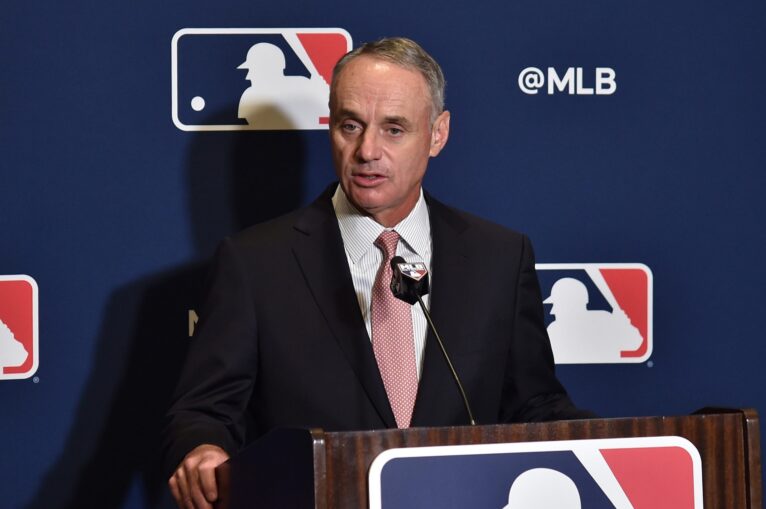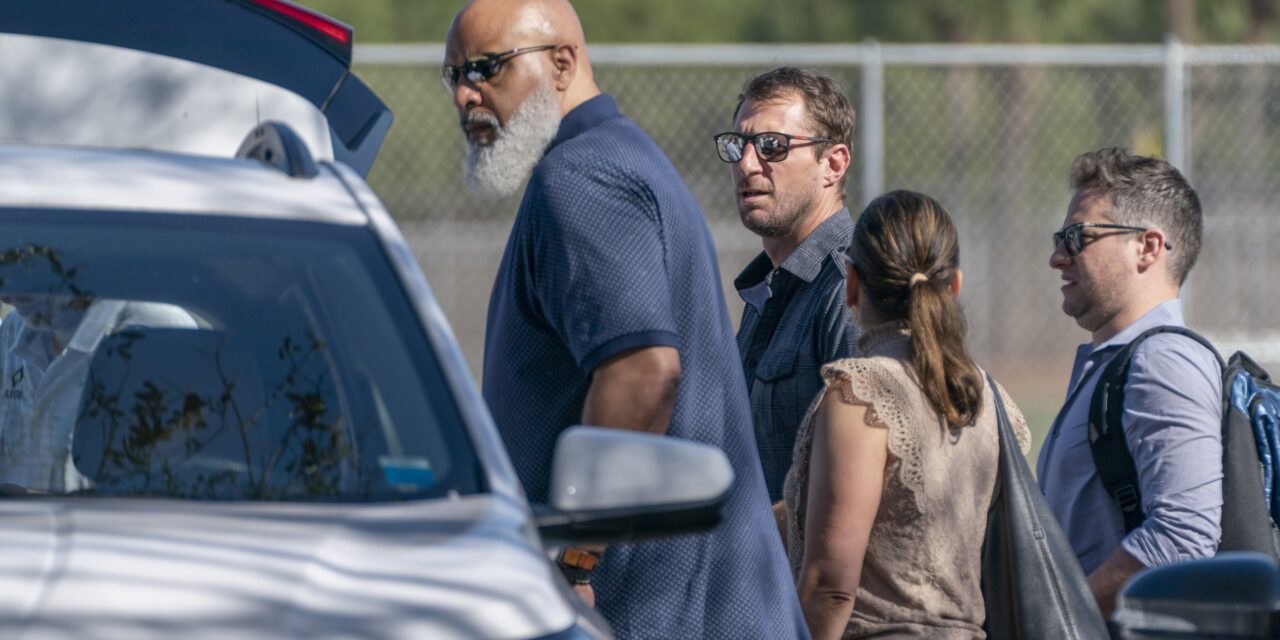
It’s starting to feel like the fans are Charlie Brown, and the players and owners are Lucy. Just like every time Charlie Brown went to kick the football and Lucy pulled it away resulting in Charlie ending up on his back side, whenever Major League Baseball and the Major League Baseball Players Associating enter a bargaining session, the fans have at least a thin ray of hope. And after each round of talks, the hopes for an end to the lockout and a resumption of the baseball calendar are quickly dashed.
Sunday was no different. It had been five days since talks broke off after nine consecutive days of negotiations in Florida, resulting in the cancellation of the first two series of the season. On Friday, reports surfaced that the players were willing to agree to a 14-team postseason, something the owners wanted because it will realize $100 million in additional revenue. Maybe that would be the big move, the one that would start a flow of give-and-take that could bring this three-month chest-pumping match to an end.
But it did not happen. None of it happened. The MLBPA stayed with its offer from last week of a 12-team playoff format, and did not move much on any of the other core economic issues. There was no breakthrough. There was no “this for that.” The only thing that did happen was the introduction of a new word into the negotiations, “deadlocked.” Bob Nightingale of USA Today was direct and to the point.
MLB's reaction today: Deadlocked.
— Bob Nightengale (@BNightengale) March 6, 2022
And just like after virtually all of the other bargaining sessions since January, the rhetoric started. The refrain is the same. “We are disappointed. We have made all the concessions…” Here is MLB Spokesman Glen Caplin, from Nightingale on Twitter.
MLB spokesman Glen Caplin on today’s MLB talks, saying they are now deadlocked. pic.twitter.com/fC403g1Avr
— Bob Nightengale (@BNightengale) March 6, 2022
From a posturing perspective, absolutely nothing has changed in the 96 days since December 2 when the lockout began. Looking at the bright side, MLB and the MLBPA have agreed to a few things, including allowing MLB to implement three possible rule changes for 2023 with 45-days’ notice rather than a year’s notice (a pitch clock, larger bases, and a ban on shifting). Previously, they agreed on a Universal Designated Hitter, and the concept of a draft lottery (though not the number of teams in it).
Moving to economics, the owners and players have agreed to a bonus pool for “Super Two” players, who previously qualified for arbitration ahead of the three years of service time requirement. The union has dropped its request for 100% of players with between two and three years of service time being eligible for the pool, and agreed to keep the percentage at 22%, as is the case in the current Collective Bargaining Agreement (for arbitration). However, they are $50 million apart on how much should be in the pool. The players have also dropped their request for a change in the percentage of local revenue that is shared among the clubs.
That brings us to the the recurring issue of the Competitive Balance Tax. Most frustrating from an onlooker’s perspective is that the CBT is clearly the biggest roadblock to an agreement, but the two sides seem to be so locked in on their positions that there is seldom any movement (or even discussions). From Jesse Rogers of ESPN:
The union’s first threshold in the CBT still starts at $238 million and ends at $263 million. The league’s offer begins at $220 million, going up to $230 million over the course of the five years.
The owners have moved on the tax rates, agreeing to keep them as they were in the previous CBA after originally seeking rates as high as 100% for repeat offenders.
MLB and the MLBPA discussed, and disagreed on, the international draft on Sunday. However, that does not seem to be a “deal breaker” type of issue. The number of teams in the draft lottery is also not critical to a deal. Whether or not this deadlock can be broken will come down to economics. From seemingly easiest to hardest, here is what needs to get done to get baseball back on the field.
- The minimum salary. MLB is at $700,000 in year one with an increase of $10,000 in each of the five years of the CBA, the MLBPA is at $740,000 in year one, increases of $20,000 in years two and three, and increases in years four and five tied to inflation.
- The dollars in the bonus pool. MLB has offered $30 million and the MLBPA is requesting $80 million.
- The postseason. MLB prefers 14 teams, but has agreed to 12. The MLBPA has indicated it may be willing to go to 14 teams under specific conditions, but has yet to propose more than 12 teams.
- The CBT. MLB has proposed a year-one threshold of $220 million, up from $210 million in 2021, rising to $230 in year five, the MLBPA is seeking a threshold of $238 million in year one, rising to $263 million in year five.
At some point, they will have to start discussing the CBT, and hitting the issue head-on so it can be resolved. When Caplin (above) says that MLB was hoping to see movement in its direction in the MLBPA’s most recent offer, it’s likely he’s referring to the postseason format. If MLB gets 14 teams and the associated revenue, it may be willing to move on the CBT and dollars in the bonus pool.
It’s puzzling as to why the MLBPA did not offer 14 teams in Sunday’s proposal to get things moving. Perhaps their strategy was to establish their position in writing, and wait for MLB to come back with a 14-team offer, along with movements on the bonus pool and CBT to see how flexible the owners are on the topics.
Regardless of strategy on either side, the fact is that every time there is a proposal, events follow the same pattern. Any concessions in the proposal are incremental, then the other side expresses disappointment, then there’s a delay (where there may be an attempt to win the public’s support), followed by another proposal when the cycle kicks in again.
Something different needs to happen, and happen quickly before major chunks of the schedule are lost. So far, two series have been eliminated, and two more will probably be wiped away this week. Sure, we can speculate about when the each side will feel pressure to make a deal, whether it’s missed paychecks or rebates to regional sports networks. However, it’s hard to imagine the whole process needs to come to that.
Breakthroughs should take place at the bargaining table. That’s the quickest path to a new CBA, rather than waging a war of attrition until one side caves. We currently are experiencing the latter. Smaller issues are discussed and sometimes agreed to, while the bigger ones sit. All the while, days come off the calendar, and now games go with them.
It’s the owners’ serve. Let’s hope they incorporate the 14-team playoff structure, and move substantially on the bonus pool and CBT thresholds. We don’t even know when they’re going back to the table, but we can hold out hope. Maybe this time the football won’t be pulled away.
















